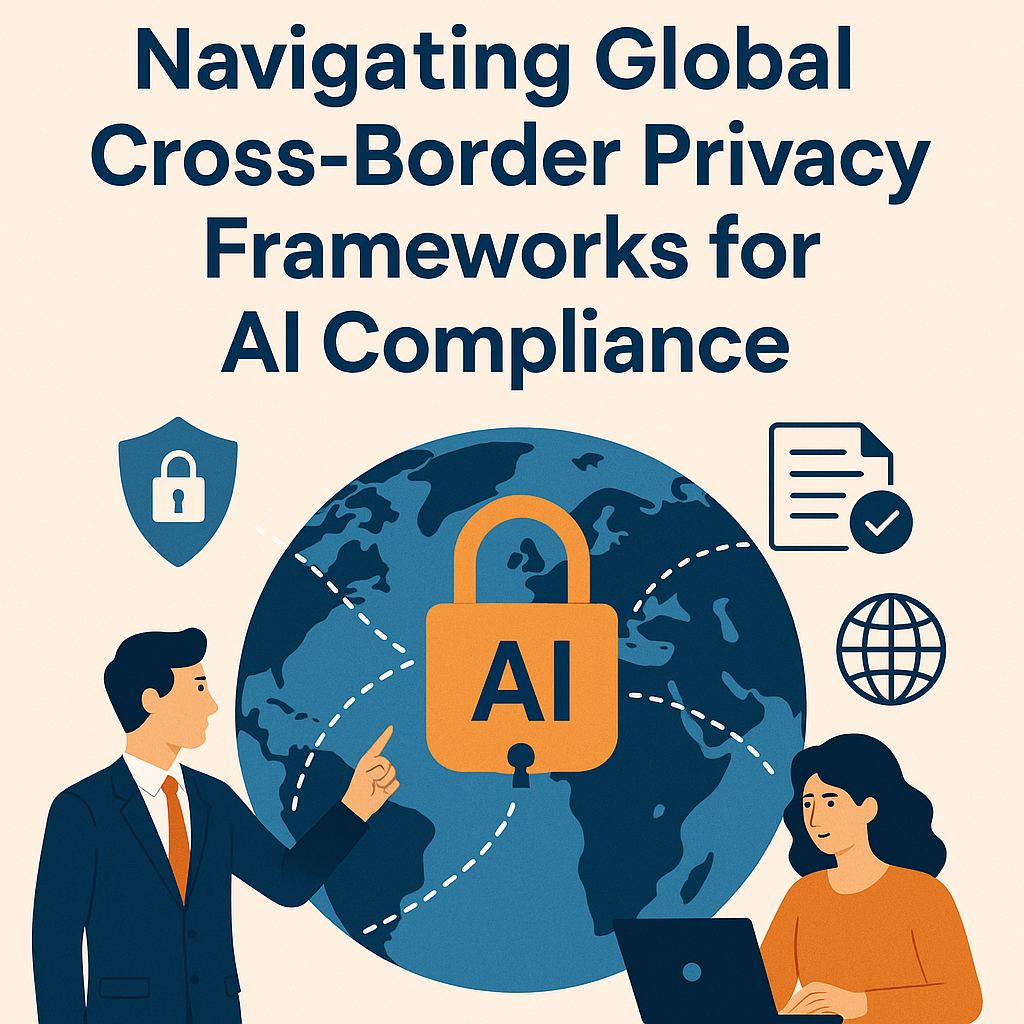Navigating Global Cross-Border Privacy Frameworks for AI Compliance

Introduction
As AI initiatives increasingly depend on vast datasets, organizations face the challenge of moving data across borders without running afoul of privacy rules. From South Korea’s new cross-border privacy framework to the European Union’s tightened scrutiny of high-risk jurisdictions, you need a unified approach to ensure seamless, lawful data flows for your AI projects.
The Rise of Global Privacy Frameworks for AI
Regulators everywhere are updating privacy regimes to balance innovation with data protection. Key developments include:
- South Korea’s Global Cross-Border Privacy Rules: The Personal Information Protection Commission (PIPC) is launching a harmonized framework aligned with APEC CBPR and EU standards to facilitate AI training while safeguarding personal data [South Korea to Launch Global Cross-Border Privacy Rules, 06-05].
- EU’s Updated High-Risk Country List: The European Commission expanded its high-risk designations to strengthen AML/CFT oversight, affecting how and where sensitive data can be transferred and processed [EU Strengthens Financial Crime Fight with Updated High-Risk Country List, 06-10].
- US State & Federal Rules: Ongoing state-level privacy laws (e.g., California, Virginia) and federal proposals create a patchwork of requirements for data transfers impacting AI model training and inference.
Key Challenges in Cross-Border AI Data Transfers
Navigating this complexity involves multiple hurdles:
- Inconsistent Definitions: What constitutes “personal data” or “sensitive information” can differ across jurisdictions, forcing you to maintain separate compliance rules.
- Localization Requirements: Some countries mandate in-country storage or processing, complicating global AI workflows.
- Data Subject Rights: Ensuring the right to access, correction, or deletion across diverse legal regimes adds operational overhead.
- Audit & Reporting Burdens: Manual tracking of transfers, consent records, and impact assessments is time-consuming and error-prone.
How AI Compliance Automation Addresses Privacy Compliance
Compliance. Accelerated by AI. Verified by Experts. This guiding principle underpins how modern GRC platforms streamline cross-border data governance:
- Continuous Regulatory Horizon Scanning: AI-driven engines ingest updates from global privacy bodies—APEC, EU, PIPC—and flag transfer- or storage-related changes in real time.
- Automated Rule Normalization: Disparate definitions of personal data and consent are mapped into a unified taxonomy, so your policies stay consistent across regions.
- Dynamic Data Flow Mapping: When new rules emerge, the platform identifies impacted data pipelines and recommends adjustments, from encryption to pseudonymization.
- Expert Review Workflows: AI-generated compliance recommendations are routed through privacy experts for contextual validation before implementation.
Must-Have Features in a GRC Platform for Privacy & AI
When evaluating solutions, look for these capabilities:
- Global Privacy Intelligence Library: Coverage of APEC CBPR, EU GDPR, South Korea PIPC rules, and major US state laws.
- Automated DPIA & Risk Assessment: Pre-built templates and AI-driven questionnaires accelerate data protection impact assessments.
- Consent & Subject Rights Management: Track and enforce user preferences and data deletion requests across all systems.
- Audit-Ready Evidence Repository: Automatically collect logs, transfer records, and impact assessment documents, all tagged and timestamped.
- Scalable Integrations: Seamless connectivity with cloud storage, data lakes, and AI training pipelines to surface privacy risks at the point of data ingestion.
Best Practices for Implementing Cross-Border Privacy Compliance
Beyond technology, a robust strategy includes:
- Data Classification: Inventory and categorize data by sensitivity and jurisdictional requirements before initiating transfers.
- Conduct DPIAs Early: Perform impact assessments for major AI projects to identify legal and operational risks upfront.
- Engage Legal & Privacy Teams: Collaborate with experts to interpret nuanced requirements and validate AI-driven controls.
- Continuous Monitoring & Auditing: Run periodic compliance checks and simulated audits to uncover gaps before regulators do.
- Staff Training: Educate your teams on cross-border rules, internal policies, and the use of compliance automation tools.
Conclusion
Ensuring lawful, efficient cross-border data flows is a critical enabler of AI innovation. By embedding AI compliance automation into your privacy strategy, you can harmonize global frameworks, reduce manual effort, and maintain audit-ready assurance. Future-proof your data governance, accelerate AI initiatives, and stay compliant no matter where your data travels.
Stay Updated with Our Newsletter
Join our newsletter to receive the latest updates and insights from our blog. Stay informed about compliance trends and best practices.
